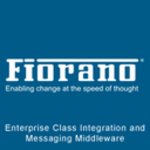What is our primary use case?
We use the solution for supply chain management between ERP systems and warehouse management systems. We use it with multiple external partners.
How has it helped my organization?
The solution has improved our organization in the sense that it offers new graphical user interfaces and protocols. The fact that they have been made available has helped out business.
What is most valuable?
The solution has a variety of valuable features.
The ESB characteristics are great. The transformation, protocol bridging and routing are great.
The list of features on offer are both useful and actionable.
The cost is pretty cheap, compared to what else is available in the market.
The solution has been on the market for ten to 15 years, so it's had a lot of time to develop.
What needs improvement?
The monolithic architecture is an issue. Due to the fact that it's a built on monolithic architecture, the solution is not very lightweight. It's not highly productive, so, in that sense, it's not so user friendly.
The solution needs to be a little bit more business-friendly in its API management capability.
The solution needs to improve its security and its proactive notification of security issues.
The expiry of the passwords, certificates, and things like that need to be powered by alerts so that it's more obvious that it's something we need to update (before everything actually expires).
For how long have I used the solution?
I've been using the solution for ten or more years. It's been over a decade since I originally started using the product. I've been working at this particular company as an enterprise architect for the last three years.
What do I think about the stability of the solution?
The solution is very stable. It's reliable.
I don't recall experiencing any bugs or glitches recently. It doesn't crash.
What do I think about the scalability of the solution?
The solution is scalable. When we need to expand the solution, we can do so easily.
We have about 5,000 integrations on the product.
It is an integration platform, so everybody related to supply chain management uses it, and eCommerce as well.
How are customer service and technical support?
We've dealth with technical support in the past and have been more than satisfied with their level of service. They are knowledgable. They respond quickly. I'd rate it nine out of ten overall.
Which solution did I use previously and why did I switch?
Although we didn't use another solution per se, we do use MuleSoft.
MuleSoft is more lightweight. It's not as monolithic. We use MuleSoft and another IBM solution. However, we've been using IBM Integration Bus for such a long time at this point. It's been ten to 15 years or so. We've only used MuleSoft for the last three years. It has high productivity and a good number of integrations and the API exchange capabilities.
We run the solutions in parallel.
MuleSoft is a pretty good solution, however, we've noticed that the pricing over the last few years has gone up and it's become quite costly.
How was the initial setup?
The solution has been on the market for over a decade, so the initial setup is pretty straightforward. They've had time to perfect the process. There's also a lot of people who understand how to install it, as it's a mature product with lots of history. Many people have worked with it.
What's my experience with pricing, setup cost, and licensing?
The pricing is pretty good. We've noticed that it's quite reasonable, whereas, for example, solutions like MuleSoft are rising. Salesforce recently acquired MuleSoft and has grown its market share, however, the pricing is turning people off. IBM is much more reasonable.
What other advice do I have?
We're IBM customers. We don't have a business relationship with IBM.
The solution is deployed on an underlying platform in the traditional MQ.
I'd rate the solution seven out of ten. I'd rate it higher, however, it's not user friendly. That said, it works really well.
Which deployment model are you using for this solution?
On-premises
Disclosure: My company does not have a business relationship with this vendor other than being a customer.











